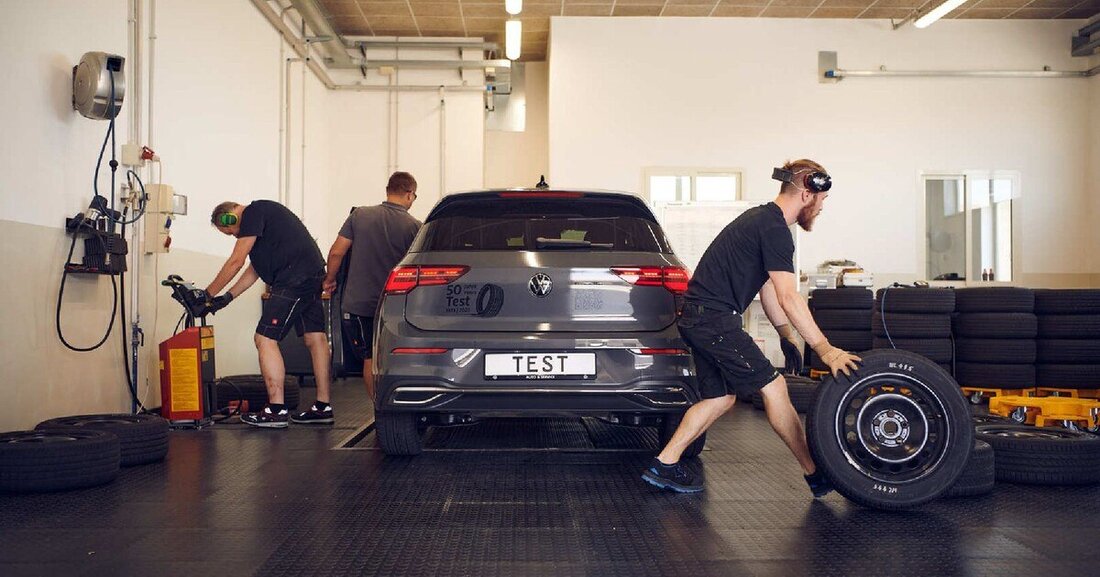All-season tires in the ÖAMTC test
For the first time, a tire received the overall rating of "Good", but there is no purchase recommendation for more than half of the models.

All-season tires in the ÖAMTC test
In addition to the classic summer and winter tires, the ÖAMTC and its partners also regularly test all-season tires, which are becoming increasingly popular. This year, one of the best-selling tire sizes, 205/55 R16, was examined. “As all-rounders, all-season tires have to perform well both in summer on 50-degree asphalt and in winter on snow and ice, as well as on wet roads all year round – a real mammoth task,” explains ÖAMTC tire expert Steffan Kerbl. “The current test makes it clear that there is still no all-season tire that achieves top marks for both driving safety and environmental performance.” Even when braking on dry asphalt, an exciting picture emerged in the test: In order to come to a standstill from 100 km/h using full braking, the best tire in this discipline (Michelin Cross Climate 2) needs 39.5 meters - whereas the weakest (Uniroyal AllSeason Expert 2) only comes to a stop 7.1 meters later. When the test vehicle with the Michelin was already at a standstill, it continued to drive at just under 40 km/h with the Uniroyal.
Of the 16 models in the current test, two (Kenda Kenetica 4S and Infinity Ecofour) were rated “Not sufficient”. Another seven candidates only achieved “enough”. “This means that no purchase recommendation can actually be made for more than half of the models tested,” says the ÖAMTC tire expert. Nevertheless, there are two bright spots to note: For the first time in an ÖAMTC tire test, an all-season tire has achieved the overall grade of “Good” – the Goodyear Vector 4Season Gen-3. It achieves good results on wet and wintery roads. Although it shows minor weaknesses on dry and hot roads, the tested Goodyear all-season tire still secured four out of five stars in the final overall assessment due to very good mileage, low abrasion and great efficiency. The Pirelli Cinturato All Season SF2 also stood out positively - it was the only one in the test to achieve a "Good" rating in terms of driving safety and was able to impress in both summer, winter and wet driving conditions. But one drawback remains: with a predicted mileage of 33,000 kilometers, it brings up the rear in the test field.
In addition to the Pirelli, five other all-season tire models were still able to achieve a solid result with an overall grade of “satisfactory”: Hankook Kinergy 4S2, Michelin Cross Climate 2, Kumho Solus 4S HA32+, Vredestein Quatrac and Falken EuroAll Season AS210. Due to their strengths and weaknesses, these do not provide an absolutely balanced overall package, but they can each suit the individual usage profile of certain drivers. Significant loss of safety – no recommendation possible for a total of nine models. Firestone Multiseason2, Sava All Weather, Nankang Cross Seasons AW-6, Toyo Celsius AS2, Semperit AllSeason-Grip, Uniroyal AllSeason Expert 2, Yokohama BluEarth-4S can only achieve “enough”. According to the ÖAMTC, the weaknesses of these seven all-season tires are so pronounced that no recommendation is made. Their performance in terms of driving safety on dry roads led to significant downgrades for all models; these tires proved to be too imprecise in summer temperatures. During evasive maneuvers at the limit, they had a clear tendency to oversteer, meaning that quick stabilization was no longer possible.
Kenda Kenetica 4S and Infinity Ecofour end up at the end of the test field - both all-season tires can only be rated as “not sufficient”. The Kenda can achieve better results on dry and wet roads, but is simply inadequate in winter conditions: of all the tires tested, it has the lowest traction on snow, and early understeer and oversteer are particularly significant shortcomings. The Infinity shows similar driving behavior on wet roads - and it also proves to be very imprecise on dry roads. “An all-season tire with which you can get safely from A to B in any weather cannot afford to slip up in any assessment criterion,” says Steffan Kerbl from the ÖAMTC and concludes: “Anyone who is thinking about buying a set of tires for 365 days a year should think about their driving and usage profile in advance using the test results. Because that is exactly what it depends on whether an all-season tire is even an option.”

 Suche
Suche
 Mein Konto
Mein Konto